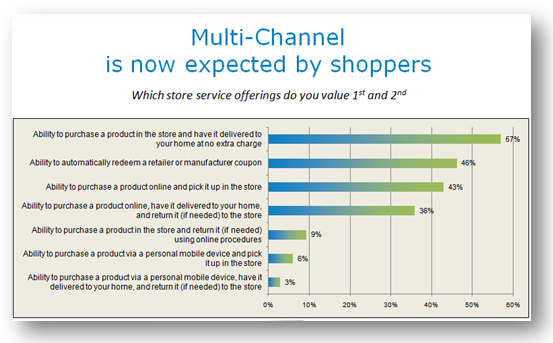Supply Chain Comment
By Girish Dhaneshwar
September 1, 2011
Is Your Supply Chain Listening?
Linking Results from the 2011 Shopper Experience Study to Your Supply Chain
The former CEO of Porsche, Peter Schutz, once said, “If you listen, your customers will explain your business to you.” For retailers, never has this been more relevant than in today’s business environment – one that is seeing seismic changes in shopper behavior and preferences, thanks to a turbulent economy and rapidly changing technology. But is listening to the shopper solely the job of store operations, merchandising and marketing departments? Is your supply chain also listening to the consumer? Is there something consumers are telling you that suggest you need to rethink your supply chain?
The 2011 RIS News/Cognizant Shopper Experience Study, published in June, reveals some very interesting findings from the consumer’s viewpoint. But if we peel back the layers beyond the shopper experience itself, hidden within many of those findings are some serious implications for your supply chain. And here is why.
Cross-Channel Fulfillment Becomes ‘Table Stakes’
One of the findings reveals that “order online, pickup in store,” which was ranked by 54% respondents as a valued retail offering last year, ended up with only 23% respondents placing a similar value on it this year – surprisingly behind 29% of respondents who said that “order online, deliver to home” is the most valuable service. (see figure below) What this really means is that “order online, pick-up in store” has not declined in value, but has rather become a “given.” This just shows how rapidly supply chains need to evolve from a fulfillment perspective. The ability to order online and pickup in the store created order routing and store picking challenges. Ordering online with free home delivery throws in the additional challenge of mastering a new delivery mechanism – small individual orders to be picked and shipped cost-effectively and on time.
Girish Says: |
 |
| The 2011 RIS News/Cognizant Shopper Experience Study reveals some very interesting findings from the consumer’s viewpoint…hidden within many of those findings are some serious implications for your supply chain. |
|
What Do You Say?
|
|
|
|

Other findings further reinforced how multi-channel capabilities continue to be top of mind for consumers – whether it’s cross-channel fulfillment or cross-channel returns. Cross-channel fulfillment poses new challenges around agile inventory deployment. The demand variability across channels continues to shift and evolve as retailers enable more and more multi-channel availability. Cross-channel returns also put new pressures on retailers to align their returns strategy around a truly integrated returns management approach. More than 20% of high-income shoppers placed great emphasis on cross- channel returns.
Re-Thinking Your Transportation Strategy
One of the mega-trends identified by the study states that the cross-channel order management will allow retailers to do SKU location rationalization, i.e., fulfill via home delivery or store delivery. This is bound to have implications for your distribution center (DC) labor strategy, transportation strategy and demand planning strategies. Centralizing slow movers in DCs will offer some opportunities for inventory optimization, but may adversely affect picking efficiencies in the DC – unless, of course, retailers realign their DC strategy accordingly. As the SKU mix that is dispatched to the stores tilts in favor of the fast movers, outbound transportation may be affected while, at the same, parcel shipments from the DC will increase. All this warrants adjustments to your transportation strategy.
The consumer study makes many more such observations. That’s why supply chain managers need to make sure the voice of the consumer is actually heard all the way back through the supply chain. Unless the supply chain is “listening,” there is no hope for survival in the new age of retailing. |